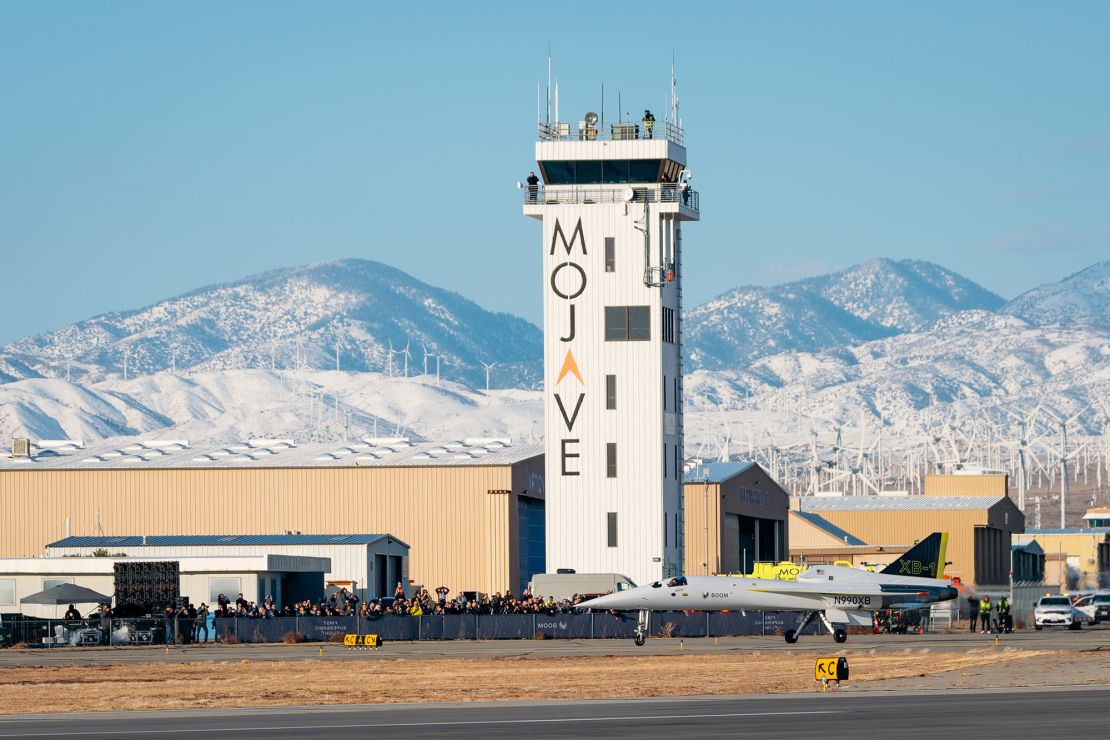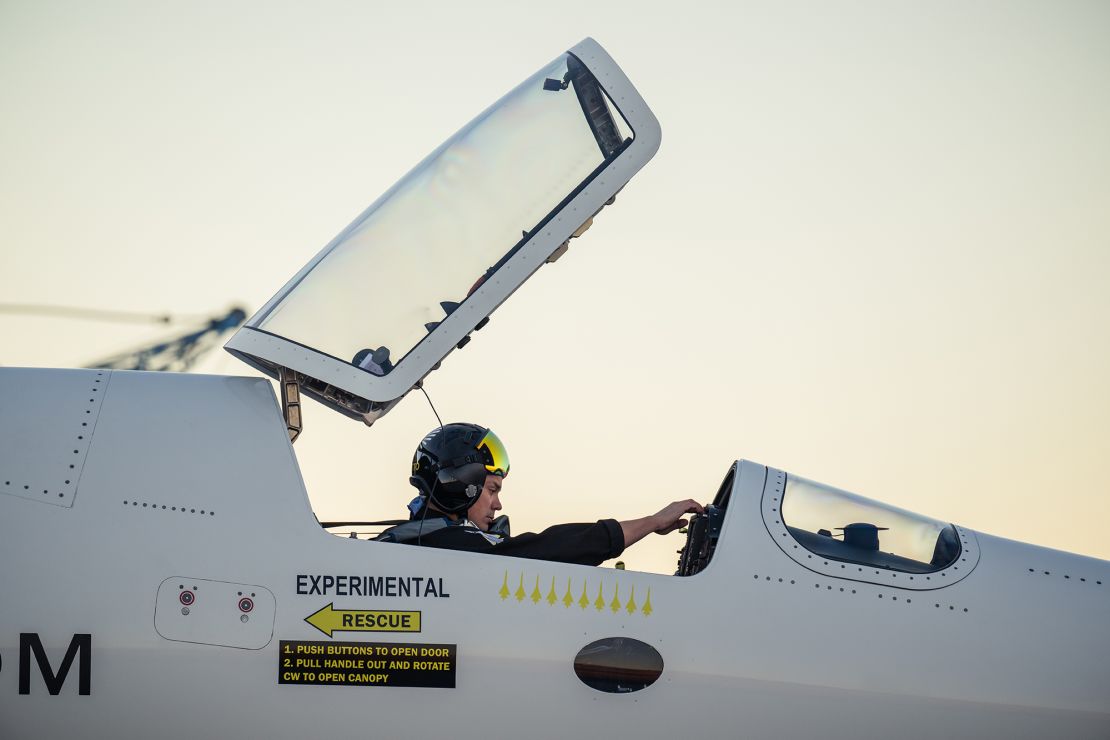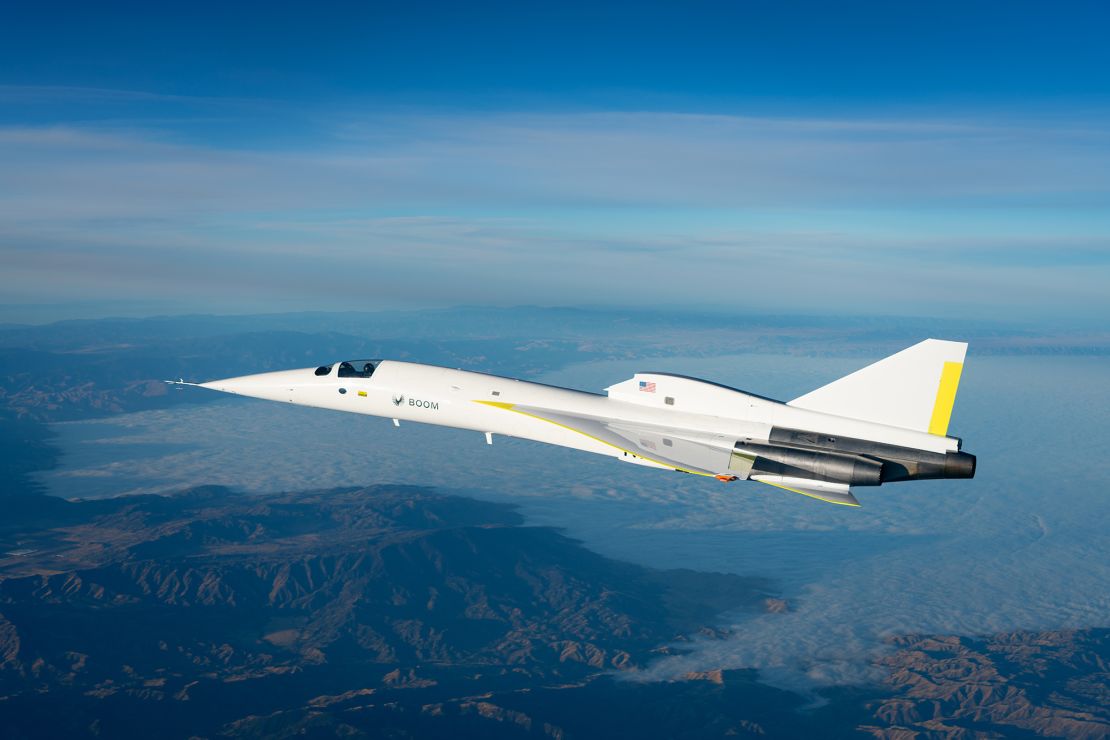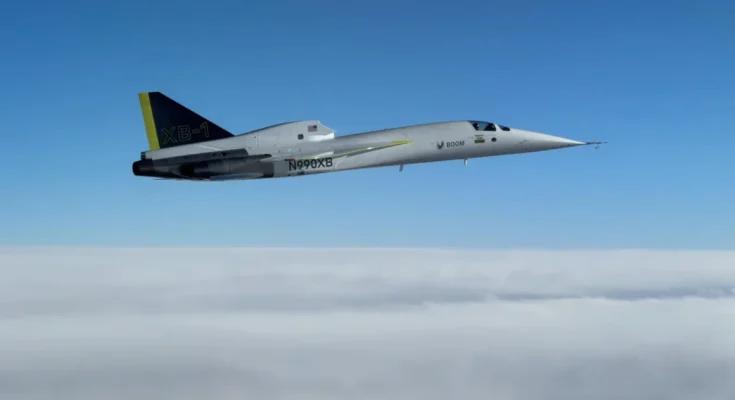Supersonic Travel Takes a Leap Forward: Boom Supersonic Breaks the Sound Barrier
The long-awaited return of supersonic travel took a major step forward on January 28, when Boom Supersonic achieved its first successful supersonic flight. The American company, building what promises to be the world’s fastest commercial airliner, broke the sound barrier for the first time with a test flight in Mojave, California.
The flight marked a historic milestone: the XB-1 demonstrator aircraft became the first independently developed jet to break the sound barrier. This flight is a crucial step toward Boom’s goal of launching the Overture, a supersonic airliner for passengers.
Tristan “Geppetto” Brandenburg, Boom’s chief test pilot, took the XB-1 to a speed of Mach 1.122 (750 mph or 652 knots) about 12 minutes into the flight, reaching an altitude of 35,290 feet. The aircraft soared in the very airspace where Chuck Yeager famously broke the sound barrier in 1947.
This successful test marks the 12th flight for the XB-1, which had previously reached just below supersonic speeds (Mach 0.95) in earlier tests. A livestream documented the historic moment as engineers monitored live data during the flight.
Boom Supersonic’s vision for the future of aviation is ambitious, with 130 orders already placed by major carriers, including American Airlines, United Airlines, and Japan Airlines. CEO Blake Scholl is confident that supersonic travel will once again be a part of everyday life. “I very much believe in the return of supersonic air travel,” Scholl said. “Ultimately, it will be available to every passenger, on every route. But that doesn’t happen overnight.”
Overture, Boom’s upcoming commercial jet, is set to carry 64 to 80 passengers at a speed of Mach 1.7—almost twice the speed of today’s subsonic jets—and Boom hopes to have it in operation before the end of the decade.
A Vision for the Future: Speed, Efficiency, and Sustainability
Scholl’s long-term dream is to make global travel faster and more affordable. He envisions a world where people can fly “anywhere in the world in four hours for $100.” While the current hurdles to this dream remain, Boom is committed to reducing the cost and impact of aviation. By making planes faster, Boom aims to minimize the number of aircraft needed, increasing efficiency.
The XB-1 is the testbed for new technologies, and Overture will benefit from advancements in aerodynamics, materials, and propulsion. Unlike Concorde, the Overture will feature an augmented reality vision system for pilots, eliminating the need for a moveable droop nose but still allowing excellent runway visibility.
One of the most significant breakthroughs in this era of supersonic aviation is digital engineering. By using computational fluid dynamics—a virtual wind tunnel—Boom can run hundreds of simulations overnight at a fraction of the cost of traditional testing.
In addition to speed, Boom’s aircraft are designed to be environmentally sustainable. Overture will be powered by conventional jet engines and run on 100% sustainable aviation fuel (SAF), which Scholl believes is the future of aviation.
As construction of Boom’s Overture Superfactory in Greensboro, North Carolina nears completion, the company is poised to scale production of 66 Overture aircraft per year.


Decades in the Making
It’s been nearly 55 years since the Concorde 002 prototype first flew at Mach 1 on March 25, 1970, and more than 21 years since commercial supersonic travel ended with the Concorde’s final flight in November 2003. While the iconic supersonic jets now sit in museums across the UK, US, and France, no new challenger has yet to succeed in reviving this thrilling mode of travel—until now.
Boom Supersonic, however, is pushing forward with bold ambitions. CEO Blake Scholl told CNN last year that he believes supersonic planes will eventually replace conventional airliners within our lifetime.
“I truly believe in the return of supersonic air travel,” Scholl said in March 2024. “Our goal is to bring it to every passenger, on every route—but that’s not something that happens overnight.”
Boom’s plan is for Overture, its supersonic commercial airliner, to be flying before the end of the decade. Designed to carry 64 to 80 passengers at Mach 1.7—twice the speed of today’s subsonic airliners—Overture promises to revolutionize air travel once again.
“Anywhere in the World in Four Hours for $100”
When Blake Scholl spoke to CNN Travel in May 2021, he shared a bold dream: to make it possible for people to “fly anywhere in the world in four hours for $100.” As of 2024, Scholl confirmed that this remains his guiding vision, his “north star” for the future of aviation.
Boom’s goal is to eventually have Overture operating on more than 600 routes globally, revolutionizing the way we travel.
“A faster airplane is not just more human-efficient; it’s more capital-efficient too. You can accomplish more with the same plane and crew,” Scholl explained. “By making planes faster, we can significantly reduce both the costs and the environmental impact associated with air travel. Faster airplanes mean we need fewer of them.”
To bring this vision to life, the XB-1 test aircraft has been pivotal in proving new technologies and laying the foundation for Boom Supersonic’s future breakthroughs.

The ‘Future of Aviation’
Back in the 1960s, developing the Concorde involved building costly physical models and running time-consuming wind tunnel tests, a process that often took months and cost millions.
“You just can’t afford to test many designs when every iteration is so expensive and slow,” explained Blake Scholl. However, Boom Supersonic has revolutionized the process. Instead of relying on traditional wind tunnels, Boom uses computational fluid dynamics—essentially a digital wind tunnel. This allows them to simulate hundreds of tests overnight for a fraction of the cost of physical models.
The XB-1 is constructed almost entirely from carbon fiber composites, chosen for their strength and lightness, improving efficiency and performance.
Boom’s ambitious Overture is designed to run on conventional jet engines but can also operate on 100% sustainable aviation fuel (SAF), a crucial step towards eco-friendly air travel. Although SAF is still limited and expensive, Scholl remains optimistic, believing it will one day fuel all long-haul flights.
“It’s the future of aviation,” Scholl declared confidently.
Last year, Boom Supersonic completed the construction of its Overture Superfactory in Greensboro, North Carolina, designed to scale production and ultimately manufacture 66 Overture aircraft per year, marking a new chapter in the evolution of air travel.





